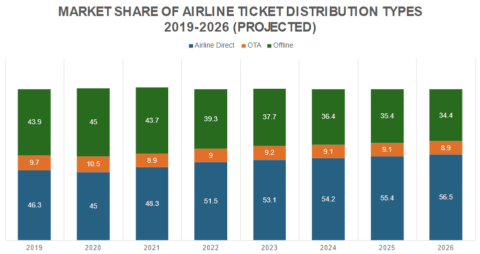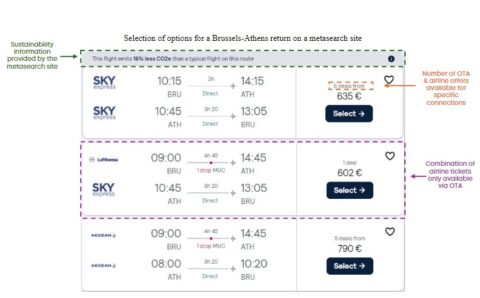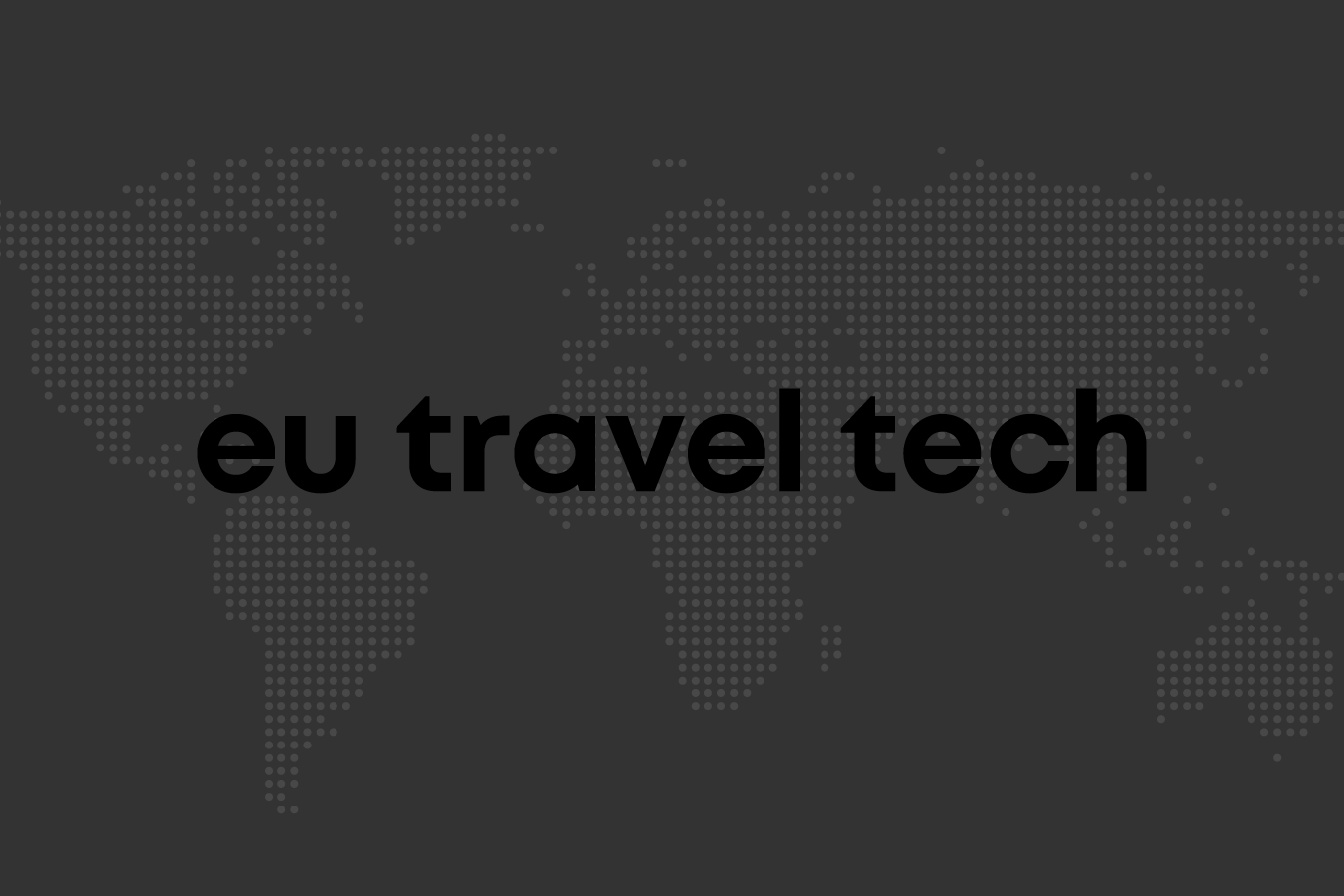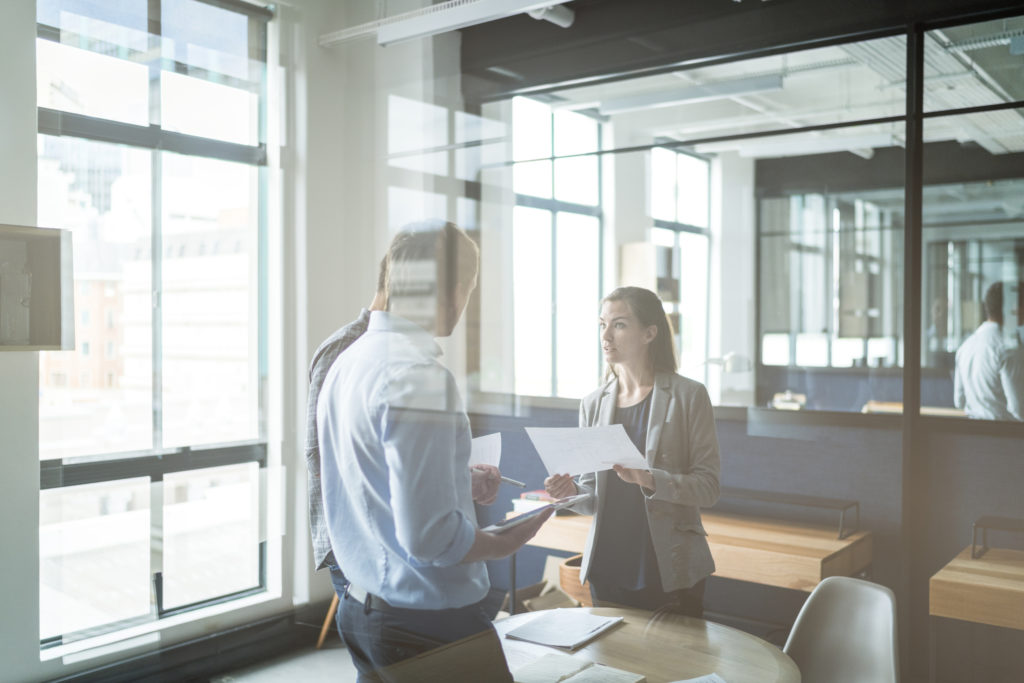Partners through Turbulence: The Complex Relationship Between Airlines and OTAs

In the travel and tourism sector, the ongoing tussle between airlines and intermediaries is impossible to ignore. Recently, airlines have intensified their criticisms against air ticket distribution intermediaries, particularly targeting online travel agencies (OTAs). A recent “study” by Airlines for Europe (A4E), for instance, claims that online intermediaries negatively impact both consumers and carriers (based on interviews with some A4E members and the purchase of 9 tickets; see here for further comments about the shortcomings of this document). These grievances span a range of issues, from consumer interactions and fare transparency to refund policies and more.
This tension might seem paradoxical given that airlines and intermediaries are, in essence, business partners with a shared goal: selling more air tickets. However, this friction reveals deeper, underlying dynamics at play—ones that highlight both the interdependence and the rivalry that define this partnership.
This blog post explores the tensions and interdependence between airlines and OTAs, arguing that while airlines may strive for more direct control, the role of intermediaries is indispensable in ensuring a competitive, consumer-friendly, and globally accessible air travel market.
A Historical Perspective: From Partners to Rivals
Aviation, like any business, involves both production and distribution. Without passengers to fill the seats, even the most advanced aircraft are just expensive pieces of technology burning cash at 35,000 feet. Historically, airlines have relied heavily on travel agencies to reach customers, especially in international markets. A German airline, for instance, would find it challenging to attract customers in Spain or Greece without a broad distribution network—a network that would be prohibitively expensive to build from scratch.
In airlines’ home markets, travel agencies helped customers compare different flight options, much like shoppers comparing products in a store. These agencies were compensated through commissions, a model that worked much like retail markups in other industries.
The internet revolutionized this dynamic. Airlines saw an opportunity to bypass intermediaries by marketing directly to consumers online, reducing their dependence on third-party channels and minimizing exposure to competition. Over the past three decades, direct distribution has grown significantly and now accounts for the majority of bookings.
Source: Phocsuwright
The Rise of OTAs and Metasearch Engines
In parallel, the digital era introduced new players into the distribution landscape: OTAs and metasearch engines, which transformed how travelers search for and book flights. These platforms simplify price comparison, helping travelers find the best deals and offering services like cross-faring and virtual interlining, where flights from different airlines are combined into a single trip—options that only independent intermediaries can offer.
By providing full visibility into all available deals, these platforms drive competition among airlines and distribution channels. This transparency benefits consumers, resulting in lower prices and better service as both airlines and OTAs strive to offer the best value.
These tools have been particularly instrumental in the success of the EU aviation single market, where competition among national flagship carriers and low-cost airlines has thrived. OTAs and metasearch engines have leveled the playing field, allowing new entrants to compete directly with established airlines without needing massive marketing budgets. For consumers, this has meant greater choice and more competitive pricing.
A Symbiotic Yet Strained Relationship
Despite the apparent friction, airlines and OTAs are deeply interdependent. Airlines rely on OTAs to reach a broader audience, including international customers, business travelers, and budget-conscious flyers who might not visit the airline’s direct channels. Conversely, OTAs depend on airlines to provide the content that fuels their platforms. This interdependence is the foundation of their partnership, even as they clash over control and margins.
Recent developments highlight the complexities of this relationship. For example, a large American airline attempted to steer customers away from OTAs by inflating ticket prices on third-party channels, only to suffer a significant revenue decline. The airline eventually reversed its stance, with its CEO admitting the mistake and pledging to make their products available wherever customers prefer to buy them.
In Europe, a low-cost airline’s battle against OTAs has been even more contentious. The airline introduced a controversial facial verification process to hinder OTAs in selling its tickets, leading to a significant drop in revenue and an investigation by a national competition authority. Recognizing the unsustainability of this approach, the airline has reached agreements with certain OTAs to distribute its flights under specific conditions.
The Path Forward: Collaboration Over Conflict
Indirect distribution channels are indispensable for a well-functioning air travel market, offering significant benefits to both consumers and airlines. The transparency provided by intermediaries isn’t just a convenience—it’s a cornerstone of healthy competition, empowering consumers to make informed choices.
As online distribution evolves and the digital landscape becomes increasingly competitive, it’s clear that collaboration between airlines and intermediaries is not just beneficial but essential. This partnership ensures that consumers have full visibility of the best travel options to reach their destinations, empowering them to make informed choices. We remain committed to working constructively with airlines to achieve this goal and hope they will recognise the value of this collaboration. Together, we can provide travelers with the transparency and options they deserve in an ever-changing market.






